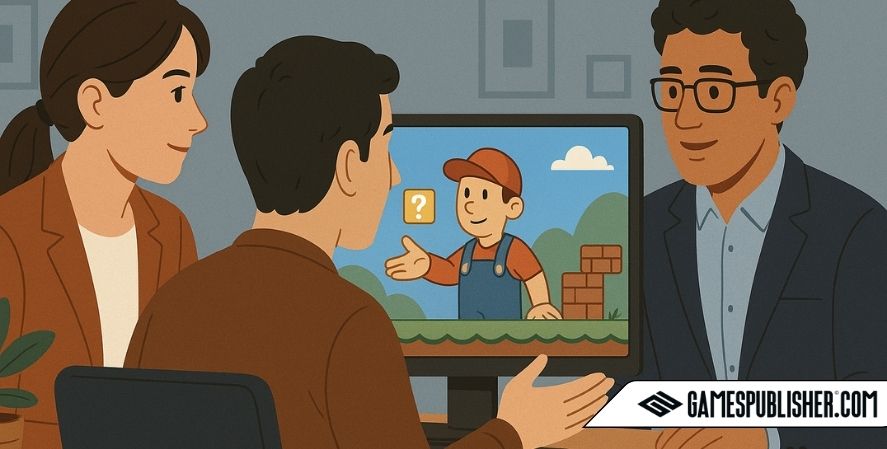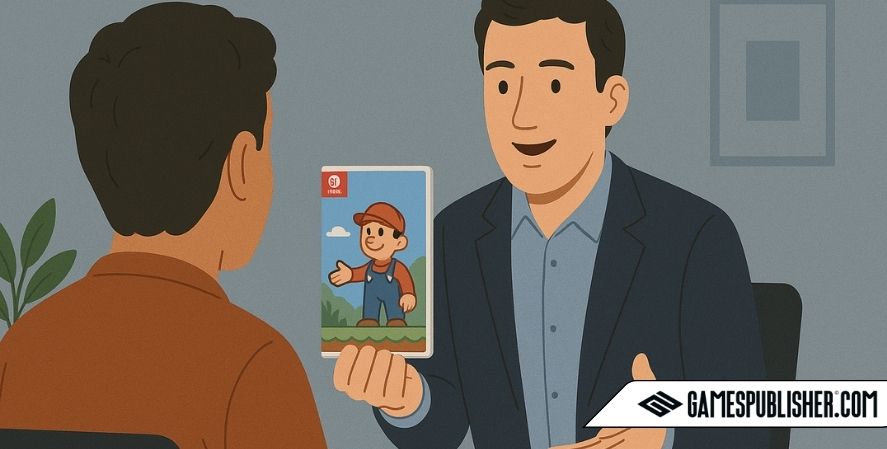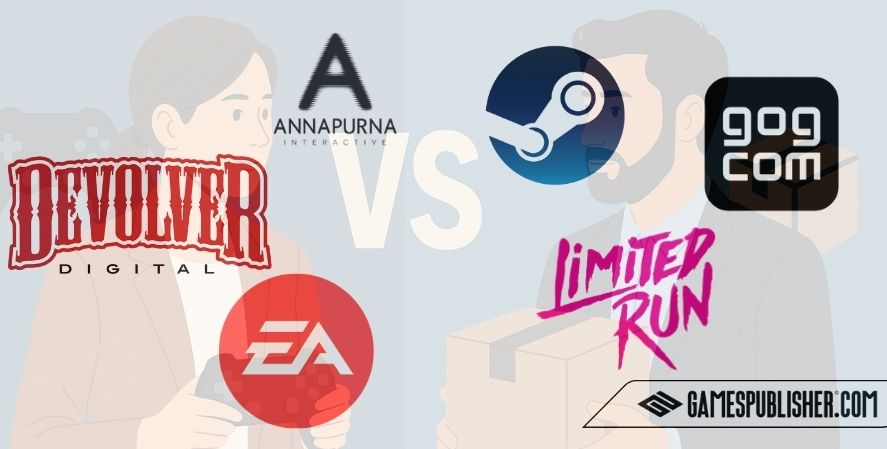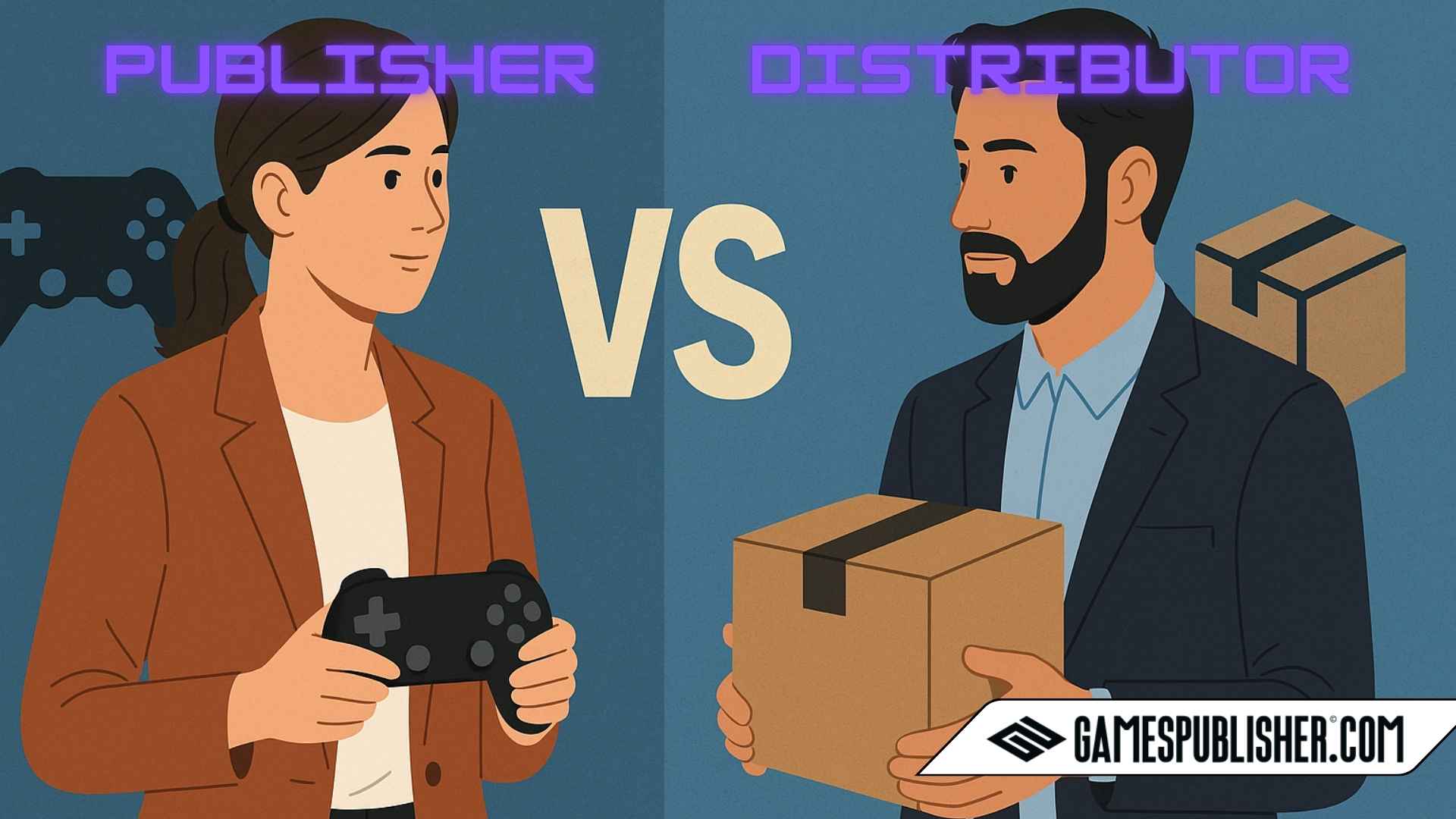Understanding the difference between a Publisher vs Distributor is essential in the gaming industry especially for indie developers, investors, and studios navigating the business side of game development. While both play critical roles in a game’s success, their responsibilities, goals, and impact on the game lifecycle are fundamentally different.
Gamespublisher.com is your go-to resource for breaking down these distinctions. In this guide, we’ll explore what each role entails, how they influence game sales and game revenue, and how you can decide which one is right for your next title.
By learning the difference between a publisher vs distributor, you’ll gain clarity on funding, marketing, platform access, and more, allowing you to make smarter, more strategic decisions when launching or scaling your game in today’s fast-moving gaming industry.
Publisher vs Distributor – Definition and Core Roles
The debate of Publisher vs Distributor begins with understanding what each entity actually does within the gaming industry. Though both are vital to a game’s success, they serve distinctly different purposes.
What Is a Game Publisher?

If you’re wondering “what does a game publisher do?”, here’s a concise answer:
A game publisher typically funds, markets, and manages the development of a video game. Publishers are often responsible for:
- Financing the game or co-funding with a developer.
- Handling game marketing, PR, and public visibility.
- Providing development support, such as QA testing, localization, and project management.
- In some cases, they even influence or direct the creative direction of the game.
When we ask “what do publishers do?”, the better question might be: what don’t they do?
Publishers often help make the game actually happen — especially for third party game developers and studios that lack in-house resources.
What Is a Game Distributor?
In contrast, a game distributor ensures that the finished game reaches consumers through various video game distribution platforms, including both digital storefronts and physical retail channels.
Distributors are primarily responsible for:
- Retail logistics: packaging, shipping, and stocking in stores.
- Digital platform management: onboarding games on Steam, GOG, Epic Games Store, and console stores.
- Regional compliance (ratings like ESRB, PEGI, localization, packaging).
- Occasionally working directly with publishers rather than developers.
The main difference is:
Publishers aim to bring a game to market and maximize success. Distributors focus on making sure the game is accessible and purchasable to players.
Publisher vs Distributor – Key Responsibilities Breakdown
Let’s break down the distinct responsibilities of each role to better understand how they contribute to the lifecycle of a game.
What Publishers Typically Do
If you’re looking into how to be a game publisher, these are the core responsibilities you’ll take on:
- Fund or co-fund development of the game.
- Design and execute game marketing campaigns: trailers, press coverage, influencer outreach.
- Manage production timelines, set milestones, and ensure delivery is on schedule.
- Provide QA and localization services to ensure game quality and global compatibility.
- Develop or advise on monetization strategies and pricing.
This is why partnering with a major game publisher like EA, Ubisoft, or Sony can be a game-changer for studios needing resources and visibility.
Many of the biggest video game publishers also assist with legal, licensing, IP protection, and platform negotiations.
What Distributors Typically Handle

On the other hand, game distributors are behind the scenes, making sure games are available to buy on various platforms:
- Manage relationships with digital platforms: Think Steam, GOG, PlayStation Store, Xbox Marketplace.
- Handle physical packaging and shipping logistics for boxed games.
- Work on regional packaging, rating systems, compliance with laws and distribution standards.
- Sometimes work indirectly with developers, mostly partnering with publishers to complete the distribution chain.
Some digital-only games rely on indie game distribution platforms like itch.io, where the line between publisher and distributor gets even blurrier.
Revenue Models and Contracts
The revenue models and business arrangements differ significantly between publishers and distributors.
Publisher Revenue Models
Game publishing typically involves:
- Revenue share agreements: The publisher takes a percentage of game sales.
- Milestone payments: Developers get paid when they hit development goals.
- IP ownership clauses: Publishers may retain or share IP rights depending on the contract.
Larger publishers may invest heavily upfront, expecting higher returns over time, while indie game publishers often opt for more developer-friendly terms.
Distributor Contracts
Distributors, by contrast, work on:
- Fixed-fee models: Especially in physical distribution.
- Percentage-based commissions: Usually lower than publishers, as they handle fewer high-risk tasks.
- Some digital stores like Steam take a 30% cut per sale — essentially acting as a distribution platform with baked-in marketing features.
A developer working with both a publisher and distributor might end up sharing revenue between all parties, which makes contract negotiation critical.
Publisher vs Distributor – Real World Examples

Let’s look at how real companies illustrate the Publisher vs Distributor dynamic.
Notable Game Publishers
- Electronic Arts (EA): One of the biggest video game publishers with titles like FIFA, Battlefield, and The Sims.
- Devolver Digital: A beloved name among indie game publishers, backing games like Enter the Gungeon and Loop Hero.
- Annapurna Interactive: Known for critically acclaimed indie titles like Stray and Outer Wilds.
These companies typically fund development, offer marketing opportunities, and ensure game revenue is maximized.
Notable Game Distributors
- Steam: The dominant video game distribution platform, distributing thousands of games via its storefront.
- GOG: DRM-free digital distribution, popular for retro and indie games.
- Limited Run Games: Focuses on physical distribution of indie and niche titles.
A Game Lifecycle Example
A studio creates a game and partners with Annapurna Interactive for publishing. Annapurna handles funding, promotion, and press. The game launches on Steam, where Valve (Steam’s owner) acts as the distributor, hosting the game and facilitating sales.
Publisher vs Distributor – Which One Do You Need as a Developer?
This is the million-dollar question for third party game developers and studios: Do I need a publisher, a distributor, or both?
How to Decide
Ask yourself:
- Do I need funding or marketing? → Consider a publisher.
- Do I only need to get my game onto platforms like Steam or GOG? → You need a distributor.
- Do I want creative control and full revenue? → Consider self publishing video games.
Some developers choose to self-publish and rely solely on distribution platforms like Steam. Others might seek game publishers for indie games to access wider audiences.
Red Flags to Watch For
- Publishers that demand full IP ownership for minimal funding.
- Distributors with poor platform relationships or unclear revenue models.
- Lack of transparency in Engagement Statistics or expected game sales.
Always consult legal experts before signing any agreements.
Publisher vs Distributor – Impact on Game Success
Both roles can make or break a game’s performance in the market.
Publisher Impact
A great publisher can:
- Boost game visibility through press, trailers, conventions.
- Provide game marketing that’s tailored to your genre and audience.
- Help with QA, localization, monetization, and even development mentorship.
Games like Hades (Supergiant + Epic) or Stray (BlueTwelve + Annapurna) are great examples of strong publisher partnerships.
Distributor Impact
Distributors affect how and where players can buy your game. The broader and more effective their network, the greater your global reach.
For example:
- Without a distributor like Limited Run Games, niche games might never see physical release.
- Without platforms like Steam, indie game distribution would be far more difficult.
Games with wide distribution see higher Engagement Statistics and game revenue over time.
Publisher vs Distributor – The Evolving Landscape

The video game industry trends are shifting, blurring the lines between publishing and distribution.
The Hybrid Future
- Platforms like Epic Games Store now offer both publishing and distribution.
- Services like Humble Bundle, itch.io, and GOG provide self-publishing tools alongside storefronts.
- Best indie game publishers often offer limited distribution help — or direct connections to platforms.
As more devs learn how to become a game publisher, hybrid models are becoming the norm.
Conclusion: Know the Difference, Make Better Decisions
Understanding the Publisher vs Distributor roles is essential for any game creator or investor.
- Publishers fund, promote, and guide development.
- Distributors deliver and make your game accessible to players.
Some developers may only need one; others may benefit from both.
As digital platforms evolve and self publishing video games becomes easier, knowing your options empowers smarter business decisions.
Before choosing a partner, evaluate your game marketing strengths, your funding gaps, and your long-term goals.
For more insights on publishing, distribution, and scaling games, visit Gamespublisher.com — your trusted resource for navigating the business of games.
Loading survey...

